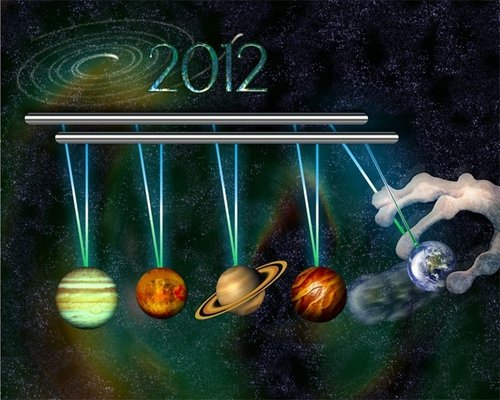The life of stars in the universe
For several hundred years, which have passed since the invention of the telescope, scientists observing the life of stars in the Universe, see all the time virtually the same picture: the stars have hardly moved from their places.
The extinguishing ones have not had time to go out, the igniting ones have not had time to flare up. The counting of time for stars is measured by quite different magnitudes than for man and mankind.
The stars of our galaxy
Hundreds of millions, billions of years - these are the appropriate scales on which to measure stretches of stellar history. Snapshots of the starry sky, separated by tens or even hundreds of years, are to an earthly observer what it is to a Martian studying the history of mankind by crowd photographs taken at intervals of a millionth of a year.
But even such pictures can be useful to the Martian. Here he noticed a group of children in one of the pictures - now he can conclude that people do not immediately become adults, that they have childhood.
Something similar found and astronomers led by Academician VA Ambartsumyan, who studied the stars of our Galaxy. They found in it special groupings - O-associations. Stars included in such associations, as a rule, are very young stars, just beginning their life journey.
Astronomers also noticed that O-associations, where stars orbit around a common center of gravity, are very short-lived. Thus, these associations are something like orphanages where young stars are gathered before going out into life.
The process of star birth
So how does the process of star birth itself take place? No one has ever observed such a process, because it, like all other events in the life of stars, is immeasurably longer than a human life.
Academician Hambartsumyan believes that stars arise as a result of the development of the so-called pre-stellar matter, preserved in the central nuclei of the Galaxy. But here's a star that's on fire and working. It should be noted at once: a star is a machine operating at very high parameters.
A star called the Sun
For example, at the center of our Sun, the pressure reaches trillions of atmospheres.
It's impossible to imagine such a pressure on Earth. No molecules of substances known to us can exist at that pressure. And atoms at such a pressure must lose their electron shells and turn into a mixture of different atomic nuclei and elementary particles.
The existing temperature is 13 million degrees Celsius. And the density that the substance acquires under these conditions is about 100 grams per cubic centimeter, five times the density of platinum. This mixture of atomic nuclei and elementary particles is a special case of plasma, the fourth state of matter.
Would this plasma make a good stuffing for a space superbomb? Why doesn't the Sun, stuffed with this infernal mixture, explode? It is kept from exploding by the forces of universal gravitation, (more: Law of Falling Bodies) - the most powerful forces in the universe.
Only they, apparently, are able to keep in obedience the continuously exploding thermonuclear bomb of the Sun. Here we must also take into account the special nature of energy transfer, carried out in the bowels of the Sun. It is clear that the main thermonuclear processes of hydrogen "combustion" go in the deep interior of the star.
During these processes, hard quanta of gamma radiation are emitted. They rush through the thousand-kilometer thick star, are absorbed by the substance, then emitted again, but already softer.
The pushing, expanding force of ray pressure opposes the force of gravitational compression. And all the time, while the star is working, this balance is maintained. And the star works - depending on the greater or lesser to its wastefulness - from several hundred million to several tens of billions of years.
However, sooner or later, at some stage of its development, the star begins to feel the lack of hydrogen fuel. The last period of its life begins - old age. No, the burned-out star will not turn into a big boring planet, on the hardened surface of which - there was also such a hypothesis - can even allegedly arise life. Stars are fundamentally different formations from planets, and they die differently too.
How stars live in the Universe
The life of stars in the Universe proceeds in the confrontation of two forces - gravity and light pressure.
Without gravity, the pressure of light rays, the streams of quanta born in the interior of a star, would tear it apart and scatter them across the Universe.
Without light pressure, gravitational forces would have collapsed the outer layers of the star to the center, it would have shrunk, shrunk. And the cooling of the star is precisely the same as the decrease in light pressure.
And the star would begin to shrink under the influence of gravitational forces. In 15-20 billion years, the substance of our Sun will be compressed to a monstrous density of 107-108 grams per cubic centimeter. The Sun will become a so-called white dwarf.
As a result of the compression, the temperature of the star will rise sharply again, but for the last time. And then the white dwarf will slowly cool down. And of course, no life, anything like Earth's, on a white dwarf, consisting of compressed helium nuclei and elementary particles, we can not talk about. The gravitational force on its surface would crush, flatten any organic formation more accurately than the impact of a hundred-ton hammer would.
Stars of greater magnitude
That's the fate of the Sun and stars like it. But there are much bigger stars in our galaxy. And their deaths will be different. First of all, the lives of massive stars are generally shorter. A star with a mass of ten solar masses only lives for about a hundred million years. That means that since the Universe was formed, a hundred generations of such stars must have fizzled out and died!
Even more massive stars shining now were born and erupted on an astronomical scale only recently. If a star has a mass only 20 percent greater than the Sun, it can shrink to a density much greater than our daytime luminary would have to. The final density of such a star is 10 14 grams per cubic centimeter.
That's the density of atomic nuclei. In this case, the star is a ball of densely packed atomic nuclei, or rather, packed neutrons, because protons in these stars have the opportunity to react with electrons and also become neutrons. The size of the compacted star becomes very tiny - only about tens of kilometers in diameter.
Such stars are called neutron stars. They have a huge gravitational field, but almost no visible light. True, at the time of formation, the temperature on their surface should be about 10 million degrees, but at such a temperature bodies emit mainly not photons of visible rays, and X-rays.
Therefore, until recently, to detect neutron stars in the vastness of the universe was extremely difficult - because X-rays are delayed by the atmosphere of the Earth. To detect them, you have to take a special X-ray telescope outside the atmosphere.
Most X-ray sources were discovered from rockets. X-ray telescope was installed, in particular, and on the first Soviet lunar rover. And with its help it was possible to detect a number of X-ray sources in our sky.
A black hole
But 1014 grams per cubic centimeter is not yet the ultimate compaction of matter. No matter how amazing in its properties the matter of white dwarfs and neutron stars, it remains the usual matter of our world. Meanwhile, there may be a still greater compaction of matter, in which it so changes the properties of space and time that it becomes almost undetectable.
It emits no rays, it reflects no rays. The process by which there is a gravitational compression of matter to such a state is called total collapse, and the stars that have passed into this state, the scientists themselves called black holes.
In the collapsed state should go after after afterburning and cooling those stars whose mass is at least twice the solar mass. There are reasons to believe that the overwhelming part of the matter of our Universe is in just such a scollapsed state.
According to Professor K. P. Stanyukovich's calculations, the amount of conserved matter is now 20 orders of magnitude greater than the amount of free matter - the visible matter and fields of our Universe. It can be said that nature has created a huge bank where it sacredly stores matter and from where it consumes it very slowly and little by little.
It happens that sleeping matter sometimes breaks out of the bank to freedom, and in the bottomless depths of space lights up a superstar. But this is no longer the death of stars, but about their second birth, with this the life of stars in the Universe begins.


